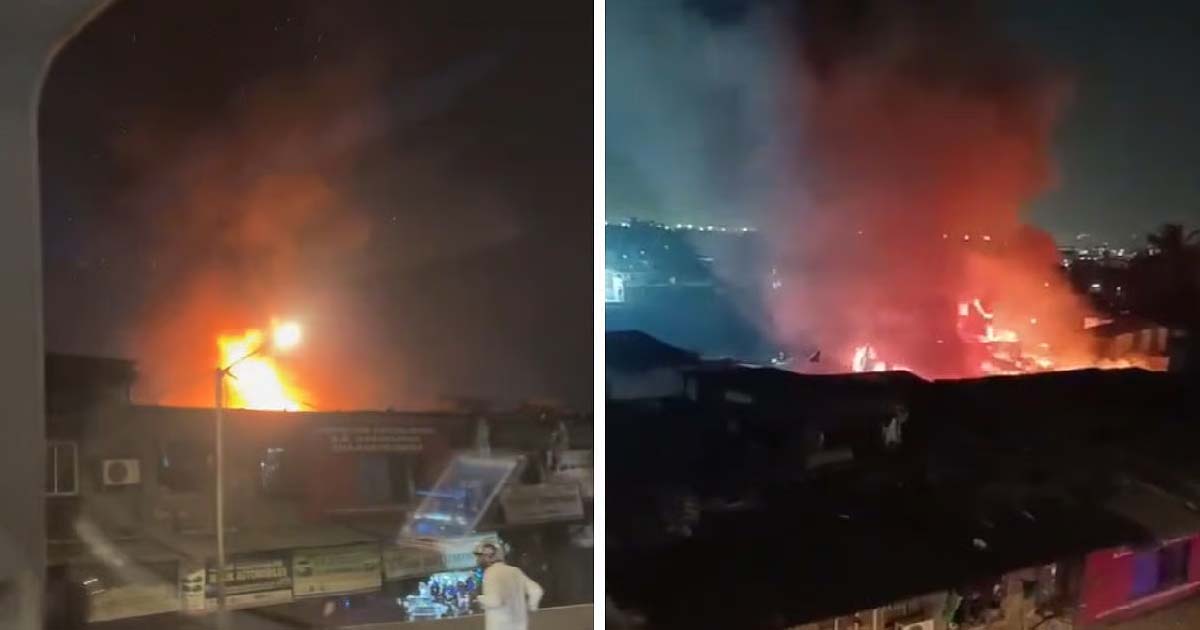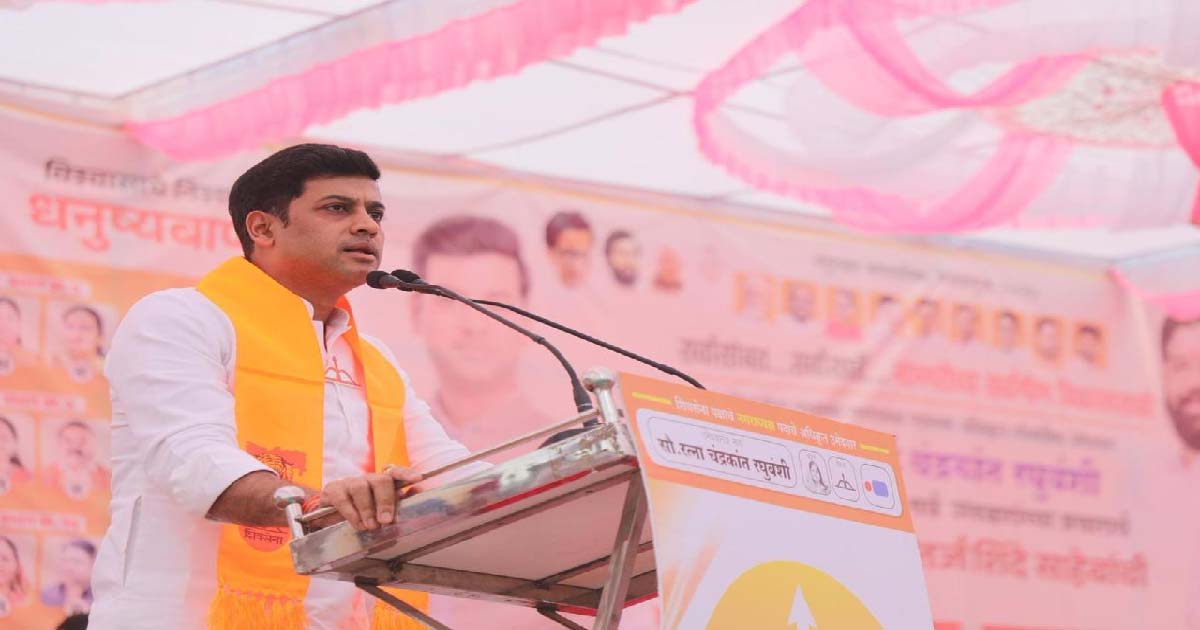Maharashtra
We want to build the biggest league outside India, says SA20 Commissioner Graeme Smith

In 15 years of its existence, the Indian Premier League (IPL) has emerged as the most prominent T20 league in the world. With T20 leagues proliferating around the world, all new entrants want to emulate IPL and become as successful in their region.
That is what upcoming South Africa’s domestic Twenty20 league aspires for — become the biggest league outside India.
With just over a month left for the start of the inaugural edition of SA20, commissioner Graeme Smith promised Indian fans an action-filled, world-class league.
“The goal of SA20 is to get South Africa cricket back to the place we all know it belongs – competing with India, competing with the likes of England and Australia and keeping the international game strong,” said SA20 Commissioner Graeme Smith at an event with Viacom18 Sports in Mumbai.
In November, Viacom18 and SA20 announced a partnership to exclusively broadcast and stream South Africa’s recently-launched premier T20 league in India.
Smith added, “We have that opportunity now through the partners we have been able to attract — the six teams, we are going to put sixty to eighty of South African players on the map and bring that fandom to India and the new heroes will come to the IPL and play for South Africa all around the world – that’s our goal. We want to build something vibrant and being able to build the biggest league outside India is something that we would really love to achieve.”
The six teams in SA20 — Durban’s Super Giants, Joburg Super Kings, MI Cape Town, Paarl Royals, Pretoria Capitals, and Sunrisers Eastern Cape — are owned by IPL franchise owners. The popularity of South African players with Indian fans coupled with the pedigree of the team owners gives SA20 a robust platform to build one of the top international T20 leagues globally.
“SA20 is primed to become one of the most popular T20 leagues in the world,” said Viacom18 Sports CEO Anil Jayaraj at an event celebrating the partnership. “At prime-time in India, the cricket-loving audience will watch South Africa’s most revered players along with global superstars and our presentation will match the energy and excitement that will come with it.”
The league features teams playing each other twice in a round-robin stage before the semis and final played over four weeks. MI Cape Town and neighbours Paarl Royals kickstart the tournament at Newlands on January 10. The opening game will be followed by Durban’s Super Giants hosting the Joburg Super Kings at Kingsmead on January 11
The SA20 will see international superstars like Quinton de Kock, Faf Du Plessis, Kagiso Rabada, David Miller, Anrich Nortje, Rashid Khan, Jos Buttler, Eoin Morgan, Adil Rashid, Jason Roy, Liam Livingstone, Maheesh Theekshana, Jason Holder in action.
Maharashtra
Mumbai Weather Update: City Continues To See Smog-Filled Morning Amid Rising Pollution; Overall AQI Remains In Unhealthy Range At 281

WETHER
Mumbai: Mumbai began its Friday with a deceptively pleasant chill, as minimum temperatures dipped just below 22°C, offering residents a brief sense of relief. However, this early coolness quickly gave way to discomfort as people stepped outside to find the city blanketed in a dense, lingering smog. Commuters heading out during peak morning hours encountered reduced visibility along with eye irritation, throat discomfort and difficulty breathing, clear signs of an atmosphere overloaded with pollutants.
What initially felt like a refreshing morning soon became yet another stark indicator of Mumbai’s steadily worsening air-quality crisis. A thick haze settled over major roads, residential complexes, commercial hubs and transit routes. With only weak winds sweeping across the region, there was little natural movement to disperse the pollutants that have been steadily accumulating throughout November.
The India Meteorological Department (IMD) reported that the city is expected to experience clear skies through the day, with temperatures likely climbing to around 33°C in the afternoon. While the mild morning chill is expected to persist over the next few days, experts noted that there is still no sign of when Mumbai’s air quality might improve. The stagnant atmospheric conditions continue to trap particulate matter close to the surface, aggravating the city’s pollution load.
On Friday, Mumbai’s overall Air Quality Index (AQI) rose to a worrying 281, placing it firmly in the unhealthy category. This spike represents a major deterioration from earlier in the month, when several neighbourhoods reported moderate or merely poor readings. The decline is now citywide, affecting coastal stretches, industrial belts and densely populated residential areas alike.
Among the worst-affected locations, the Wadala Truck Terminal recorded an alarming AQI of 395, marking it as the most polluted spot of the day. Colaba followed with a reading of 317, while Chakala reported 310, both falling within the severe category.
Prominent business zones were not spared either: Worli and the Bandra-Kurla Complex (BKC) each logged AQI levels of 310, showing how uniformly pollution has spread across Mumbai’s central, western and eastern sectors.
Some suburbs fared marginally better but still failed to reach healthy levels. Kandivali East recorded the day’s lowest AQI at 130, classified as poor. Powai stood at 200, Malad West at 210, Parel Bhoiwada at 220, and Mulund West at 237, placing all within the poor to unhealthy range.
For context, an AQI of 0–50 is considered good, 51–100 moderate, 101–150 poor, 151–200 unhealthy, and anything above 200 classified as severe or hazardous. With much of the city now above that threshold, Mumbai continues to grapple with an air-quality crisis that shows no signs of easing.
Maharashtra
Mumbai: Massive Fire Breaks Out Inside Godown In Kurla’s Kismat Nagar;

Mumbai: A major fire erupted inside a godown in Kurla West’s Kismat Nagar area on Thursday night, triggering a swift response from the Mumbai Fire Department. Videos circulating on social media showed towering flames accompanied by dense black smoke rising high above the godown, visible from several hundred metres away.
According to officials, the Brihanmumbai Municipal Corporation (BMC) Fire Brigade received an emergency call at 11:08 pm, following which multiple fire tenders were rushed to the spot. Initial assessments categorised the blaze as a Level-II fire, but as flames rapidly spread across adjoining structures, the situation escalated. By 11:44 pm, the Mumbai Fire Brigade declared it a Level-III (major) fire after the inferno engulfed nearly 10 to 12 chawl structures.
Firefighters battled the spreading flames through the night, working to prevent the blaze from reaching densely packed residential units in the vicinity. The godown where the fire originated was located within a chawl cluster, making containment especially challenging. Thick plumes of smoke blanketed surrounding localities as emergency teams attempted to bring the situation under control.
Several agencies were deployed as part of the coordinated response effort, including the BMC Fire Brigade, local police, ward officials, the Electricity Distribution Company and a 108 ambulance unit. Despite the scale of the fire and the proximity to residential structures, authorities reported no injuries so far. The cause of the blaze remains under investigation.
Meanwhile, in a separate incident late Wednesday night, a car fire on the Bandra Worli Sea Link caused major disruption to traffic. The vehicle, identified as a Honda sedan, reportedly rammed into the side barrier at high speed before catching fire. Motorists on the busy sea link were left stranded as a long traffic snarl developed, with many unsure of the cause until videos began circulating online.
Footage showed the vehicle completely charred, with firefighters working quickly to extinguish the flames. Though the fire generated thick smoke and intense heat, no casualties have been confirmed. Fire officials later stated that the blaze was brought under control after brief yet intense firefighting efforts.
Maharashtra
Shiv Sena wave in North Maharashtra, Dr. Shrikant Shinde takes charge of election campaign

Mumbai Nandurbar: Shiv Sena is on a wave in North Maharashtra. A large number of “Ladli Bheenas” and youth are participating in the rallies of Shiv Sena youth leader Dr. Shrikant Shinde. Dr. Shinde launched his election campaign in North Maharashtra today. Addressing the gathering, he said that the Mahayoti government has taken strong steps to empower women and youth, which is why Maharashtra’s Ladli Behna Yojana is becoming self-reliant. Attacking the opposition, he said that many opposition leaders were opposing the “Ladli Behna Yojana” but under the leadership of Deputy Chief Minister Eknath Shinde, this scheme was implemented and it will not be stopped under any circumstances. The opposition is only spreading confusion, Ladli Behna will respond with their votes. Dr. Shrikant Shinde explained that in the last three years, Shiv Sena has reached every corner of Maharashtra under the leadership of Eknath Shinde. Shinde Sahib is empowering his workers by holding eight meetings every day. He has an Urban Development Department, which has resulted in record-breaking funding for the backward villages of Maharashtra, paving the way for strong rural development.
Dr. Shrikant Shinde criticized UBT and said that some people are experts in criticizing, but they have never done any concrete work for the people. That is why today Mahayoti candidates are seen everywhere. The people are well aware of the state of the opposition.
-

 Crime3 years ago
Crime3 years agoClass 10 student jumps to death in Jaipur
-

 Maharashtra1 year ago
Maharashtra1 year agoMumbai Local Train Update: Central Railway’s New Timetable Comes Into Effect; Check Full List Of Revised Timings & Stations
-

 Maharashtra1 year ago
Maharashtra1 year agoMumbai To Go Toll-Free Tonight! Maharashtra Govt Announces Complete Toll Waiver For Light Motor Vehicles At All 5 Entry Points Of City
-

 Maharashtra1 year ago
Maharashtra1 year agoFalse photo of Imtiaz Jaleel’s rally, exposing the fooling conspiracy
-

 National News1 year ago
National News1 year agoMinistry of Railways rolls out Special Drive 4.0 with focus on digitisation, cleanliness, inclusiveness and grievance redressal
-

 Maharashtra1 year ago
Maharashtra1 year agoMaharashtra Elections 2024: Mumbai Metro & BEST Services Extended Till Midnight On Voting Day
-

 National News1 year ago
National News1 year agoJ&K: 4 Jawans Killed, 28 Injured After Bus Carrying BSF Personnel For Poll Duty Falls Into Gorge In Budgam; Terrifying Visuals Surface
-

 Crime1 year ago
Crime1 year agoBaba Siddique Murder: Mumbai Police Unable To Get Lawrence Bishnoi Custody Due To Home Ministry Order, Says Report












